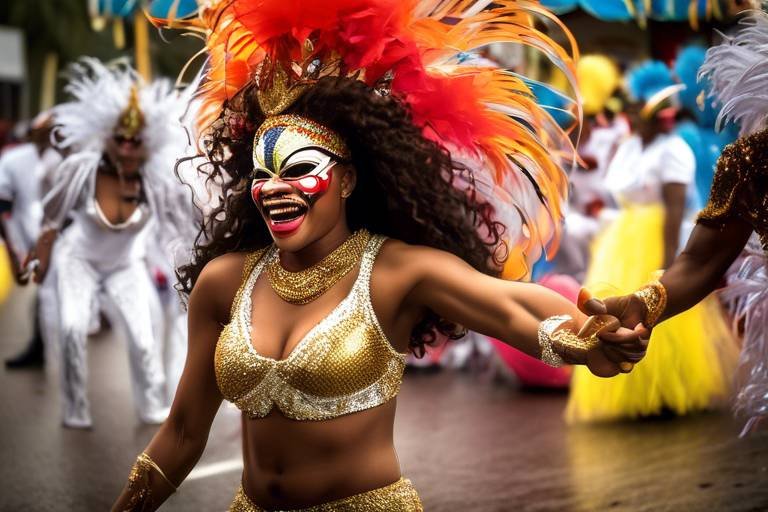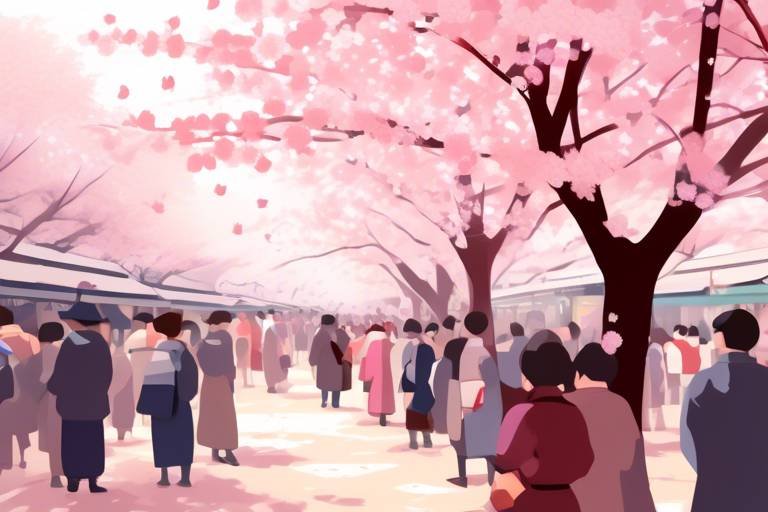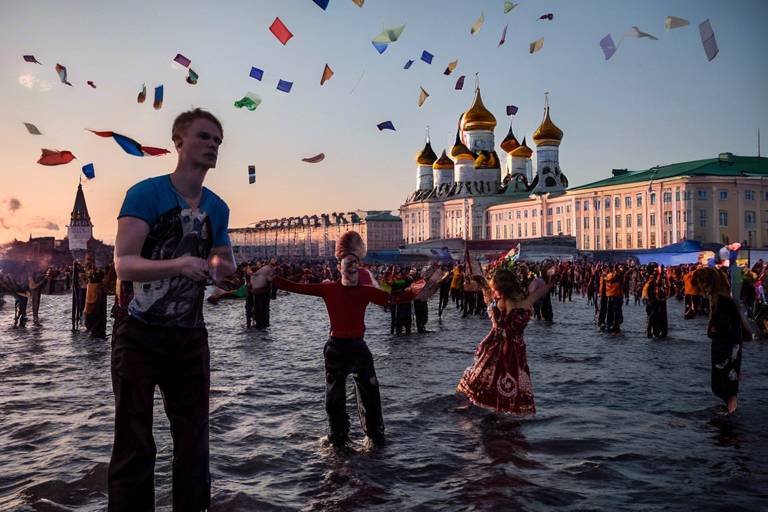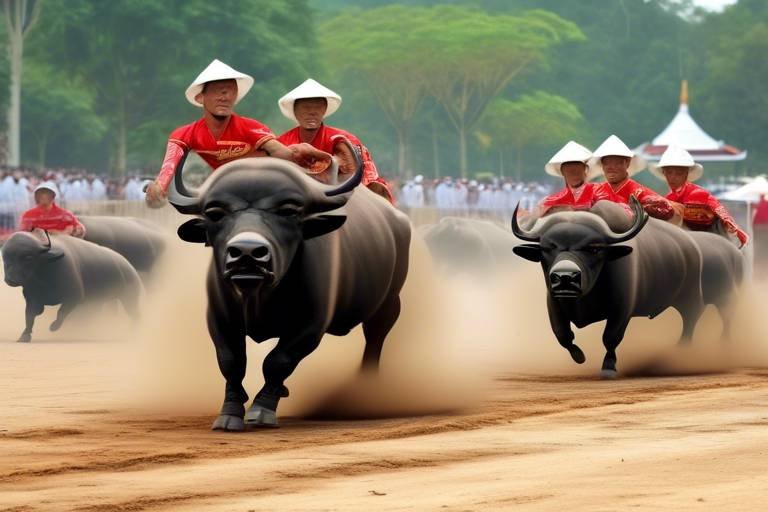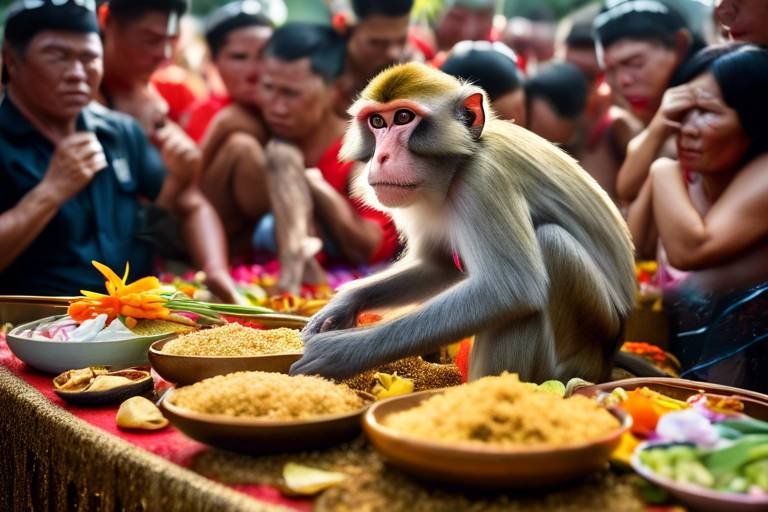The Rhythmic Beats of Trinidad's Carnival
Exploring the vibrant and colorful celebration of Trinidad's Carnival is like stepping into a world where music pulsates through your veins, elaborate costumes dazzle the eyes, and energetic dance performances ignite the spirit. It's a festival that captivates both locals and tourists alike, drawing them into a whirlwind of joy and excitement.
Trinidad's Carnival is not just a mere event; it's a cultural extravaganza deeply rooted in history and tradition. Originating from a blend of African and French customs, the Carnival has evolved over the years to become one of the most renowned festivals in the Caribbean, embodying the essence of unity and celebration.
One of the most enchanting aspects of Trinidad's Carnival is the presence of traditional masquerade characters that add a touch of mystique to the festivities. Characters like the Blue Devil, Moko Jumbie, and Dame Lorraine come to life in their vibrant costumes, each playing a unique role in the grand spectacle of the Carnival.
When it comes to the musical heartbeat of Trinidad's Carnival, Calypso and Soca music take center stage. These genres provide the lively soundtrack for the celebrations, echoing the island's rich cultural heritage and setting the rhythm for revelers to dance and rejoice.
The art of costume design and construction during Trinidad's Carnival is a masterpiece in itself. The intricate process of crafting these elaborate costumes showcases a fusion of creativity, craftsmanship, and cultural symbolism, transforming the streets into a vibrant canvas of colors and textures.
Steelpan bands add a melodic charm to Trinidad's Carnival, with their rhythmic tunes resonating through the streets. Bands compete in lively street performances and vibrant competitions, displaying their musical talents and spreading the infectious joy of the Carnival.
Joining the street parades and festivities of Trinidad's Carnival is an immersive experience like no other. The pulsating rhythms, colorful costumes, and jubilant atmosphere create a sense of unity and joy that transcends barriers, bringing people together in a celebration of life and culture.
Indulging in the culinary delights of Trinidad's Carnival is a treat for the senses. From savory street foods like doubles and roti to sweet treats like guava cheese and coconut ice, the diverse flavors add an extra layer of richness to the festivities, tantalizing taste buds along the way.
Trinidad's Carnival is not just a local affair; its impact and global influence are far-reaching. As a symbol of unity, creativity, and festive spirit, the Carnival inspires similar celebrations worldwide, leaving a lasting impression on cultures across the globe.
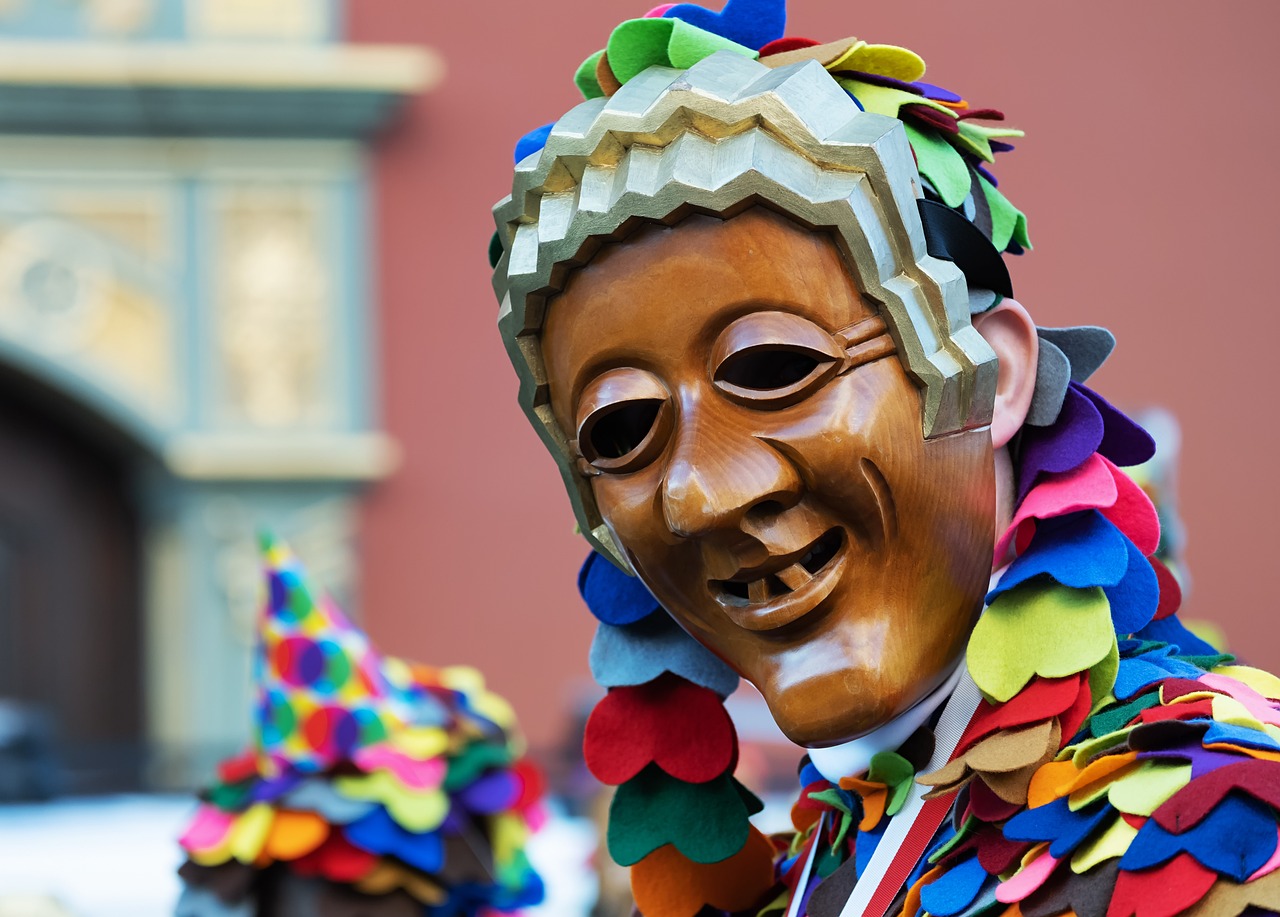
History of Trinidad's Carnival
Trinidad's Carnival has a rich history that dates back centuries, blending diverse cultural influences to create a unique and vibrant celebration. The roots of the Carnival can be traced back to the early 18th century when French colonizers brought their tradition of lavish masquerade balls to the island. Over time, African slaves added their own rituals and dances, infusing the Carnival with a dynamic energy and rhythm that still define it today.
One of the most significant events in the history of Trinidad's Carnival was the Canboulay Riots of the 19th century, where freed slaves rebelled against colonial authorities, leading to the eventual emancipation of slavery. This uprising marked a turning point for the Carnival, transforming it into a powerful symbol of freedom, resistance, and cultural pride.
As the Carnival evolved, it became a platform for social commentary and artistic expression, with calypso music emerging as a powerful voice for the people. Calypsonians used their lyrics to address social issues, political corruption, and everyday life, shaping the Carnival into a dynamic showcase of creativity and storytelling.
Throughout the years, Trinidad's Carnival has continued to evolve, embracing new influences and innovations while staying true to its cultural roots. Today, it stands as a testament to the resilience and creativity of the Trinidadian people, attracting visitors from around the world to experience its unique blend of history, music, dance, and community spirit.
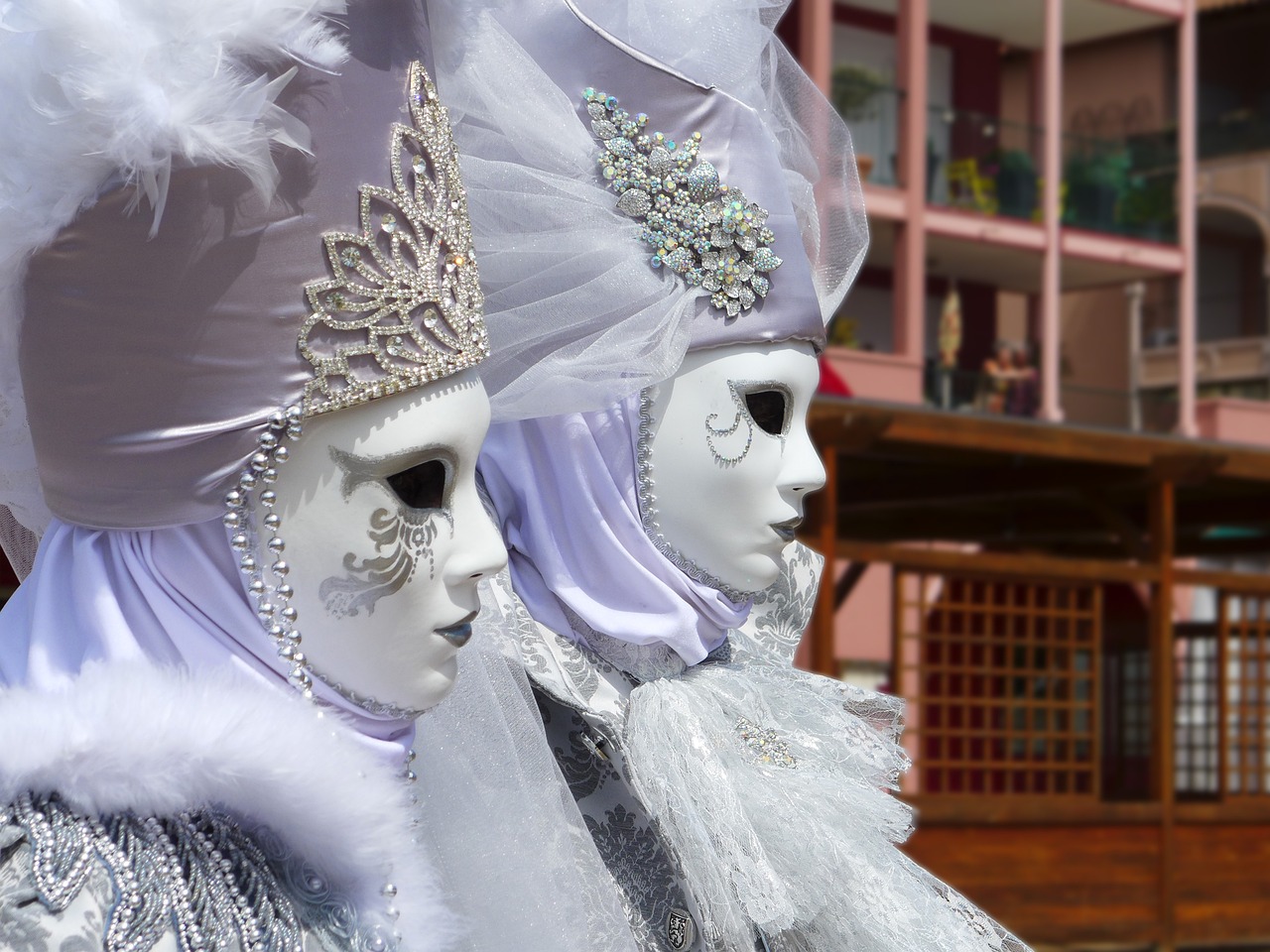
Traditional Masquerade Characters
Trinidad's Carnival is a vibrant celebration filled with traditional masquerade characters that add an extra layer of excitement and intrigue to the festivities. These characters, deeply rooted in the cultural history of the island, bring a sense of mystique and tradition to the carnival atmosphere. One of the iconic figures is the Blue Devil, a symbol of mischief and revelry, clad in striking blue attire and adorned with horns and chains. The Blue Devil's presence adds an element of unpredictability and fun to the revelry, captivating onlookers with its mischievous antics.
Another prominent character is the Moko Jumbie, a towering stilt walker who gracefully navigates the streets, towering above the crowds in colorful, elaborate costumes. The Moko Jumbie symbolizes protection and spirituality, bringing a sense of awe and wonder to the carnival procession. With each graceful step, the Moko Jumbie mesmerizes spectators, embodying a sense of tradition and cultural pride.
Additionally, the Dame Lorraine character adds a touch of elegance and sophistication to Trinidad's Carnival. Adorned in elaborate, period-inspired costumes and masks, the Dame Lorraine exudes grace and charm as she dances through the streets, captivating audiences with her refined movements and intricate attire. This character pays homage to the French influence on the carnival tradition, adding a touch of European flair to the colorful tapestry of masquerade characters.
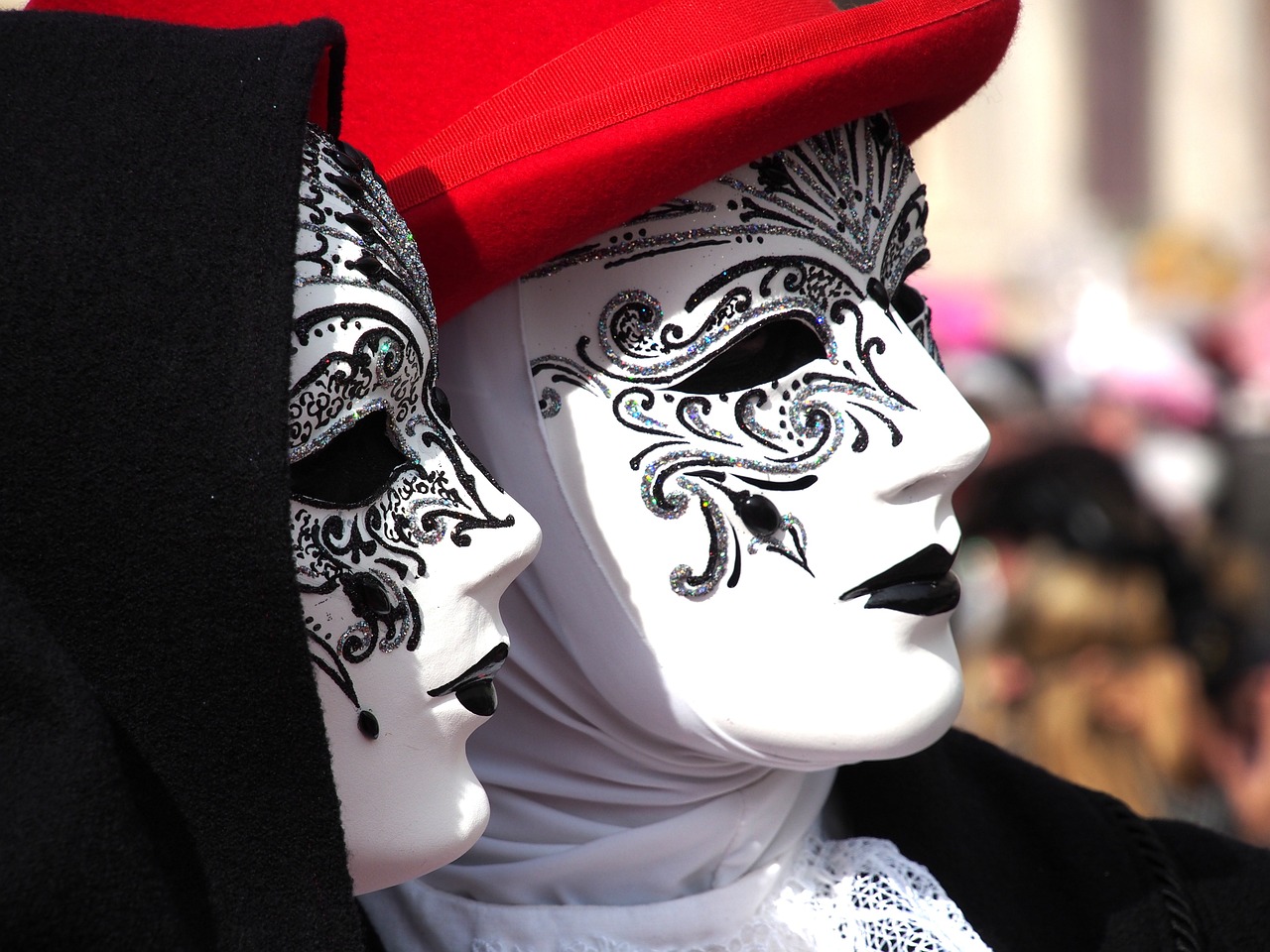
Calypso and Soca Music
When it comes to Trinidad's Carnival, the pulsating heartbeat of the festivities is undoubtedly the captivating rhythms of Calypso and Soca music. These genres serve as the vibrant soundtrack that fuels the energy and excitement of the celebration, resonating through the streets and infusing every dancer with an irresistible urge to move to the beat.
Calypso music, with its roots in African traditions, tells stories of social commentary, humor, and satire, often addressing political issues and everyday life in a lively and spirited manner. The rhythmic melodies and witty lyrics of Calypso songs create a dynamic atmosphere, encouraging both reflection and revelry among the revelers.
On the other hand, Soca music, a fusion of Calypso, Latin, and Indian rhythms, brings a modern twist to the Carnival scene with its infectious grooves and high-energy tempo. Soca songs are designed to get people on their feet, moving and grooving to the pulsating beats, creating an atmosphere of pure joy and celebration.
During Trinidad's Carnival, Calypso and Soca music are not just background noise; they are the life force that propels the festivities forward, uniting people from all walks of life in a shared experience of music and dance. Whether you're a seasoned reveler or a first-time visitor, the irresistible allure of these genres will have you dancing in the streets and feeling the rhythm deep in your soul.
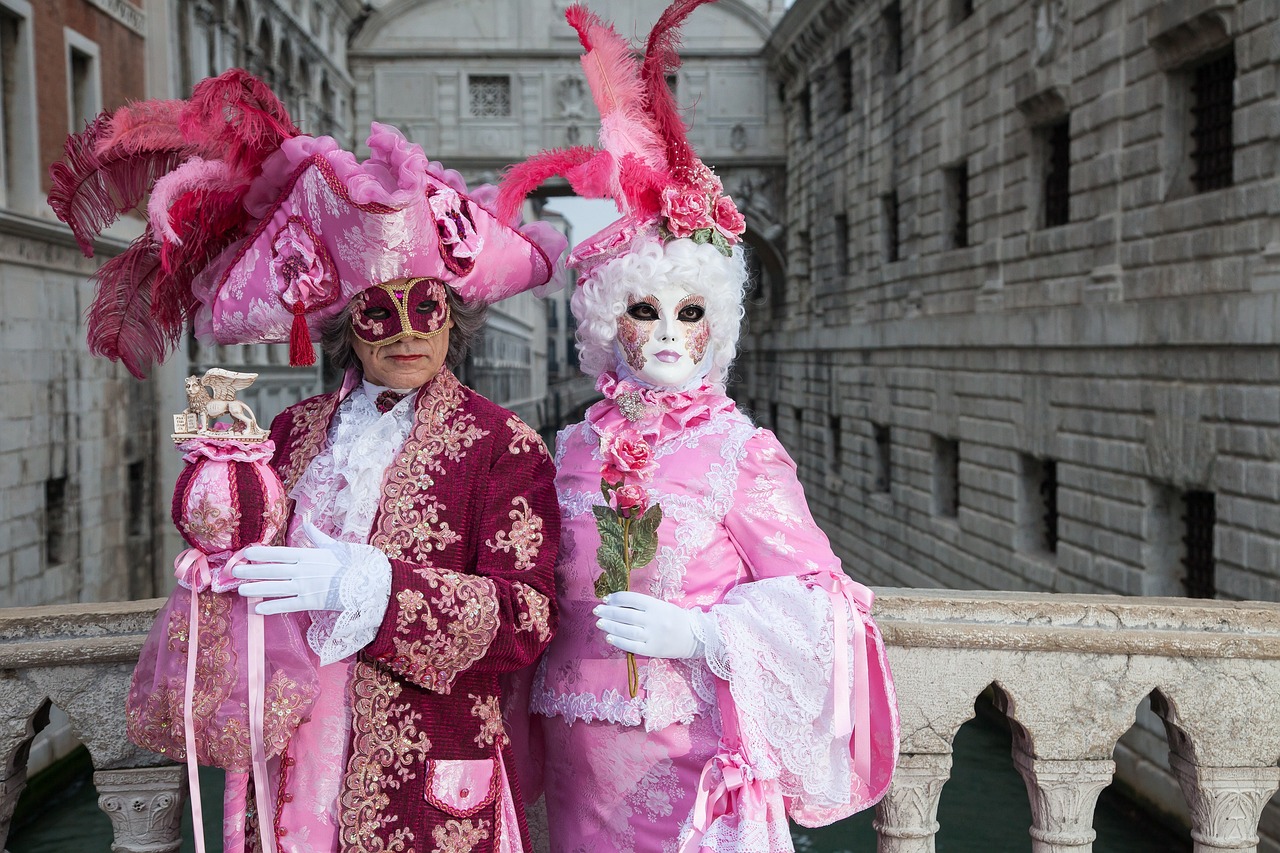
Costume Design and Construction
When it comes to Trinidad's Carnival, one cannot overlook the mesmerizing artistry and craftsmanship involved in the design and construction of the elaborate costumes that adorn the revelers. These costumes are not mere garments but intricate works of art that reflect a fusion of creativity, cultural symbolism, and sheer dedication.
The process of creating these vibrant costumes is a labor of love that begins months in advance, with designers meticulously planning every detail to ensure a stunning visual impact. From selecting the color palette to choosing the fabrics and embellishments, every decision is made with precision to bring the costume to life.
Costume designers draw inspiration from a myriad of sources, including historical references, nature, folklore, and contemporary trends. Each costume tells a unique story, with motifs and symbols that pay homage to Trinidad's rich cultural heritage and traditions.
Skilled artisans and seamstresses then bring these designs to fruition, employing intricate techniques such as beading, embroidery, featherwork, and wire bending to create intricate patterns and textures. The result is a masterpiece that transforms the wearer into a living work of art, commanding attention and admiration.
Furthermore, the construction of these costumes requires a high level of expertise and attention to detail. Each piece must fit the wearer perfectly, allowing for ease of movement and comfort during the energetic dance performances that are a hallmark of Trinidad's Carnival.
Moreover, the costumes are not just for show but play a significant role in the overall experience of the festival, adding to the spectacle and creating a sense of unity among participants. They serve as a visual representation of the joy, creativity, and vibrancy that define Trinidad's Carnival, captivating onlookers and participants alike.

Steelpan Bands and Competitions
Exploring the vibrant and colorful celebration of Trinidad's Carnival, known for its pulsating music, elaborate costumes, and energetic dance performances that captivate locals and tourists alike.
Steelpan music is the soul-stirring heartbeat of Trinidad's Carnival, resonating through the streets and captivating audiences with its melodious tunes. Originating in Trinidad and Tobago, steelpan music is a unique art form that involves playing music on steel drums, crafted from oil barrels. These drums, when skillfully played, produce enchanting sounds that evoke a sense of joy and celebration.
During Carnival, steelpan bands take center stage, showcasing their musical talents in lively street performances and spirited competitions. The bands, comprised of dedicated musicians, create intricate arrangements that blend traditional rhythms with modern influences, creating a dynamic fusion of sound that energizes the atmosphere.
Competitions among steelpan bands are fierce yet friendly, with each group vying to impress judges and spectators with their skill, creativity, and passion for the music. The performances are a testament to the dedication and talent of the musicians, who spend countless hours rehearsing and perfecting their craft to deliver captivating shows that leave a lasting impression.
As the steelpan bands compete, the air is filled with the infectious rhythms of Calypso and Soca music, adding to the vibrant tapestry of sound that defines Trinidad's Carnival. The music serves as a unifying force, bringing together people from all walks of life to revel in the joyous celebration of culture, music, and community.
Q: What is the significance of steelpan music in Trinidad's Carnival?
A: Steelpan music holds immense cultural importance in Trinidad's Carnival, representing the island's rich musical heritage and serving as a symbol of unity and celebration.
Q: How are steel drums made for steelpan music?
A: Steel drums used in steelpan music are crafted from oil barrels that are carefully shaped, tuned, and tempered to produce distinct musical notes.
Q: What role do steelpan bands play in Trinidad's Carnival celebrations?
A: Steelpan bands are integral to the festive spirit of Trinidad's Carnival, providing captivating performances that enhance the overall experience for participants and spectators alike.
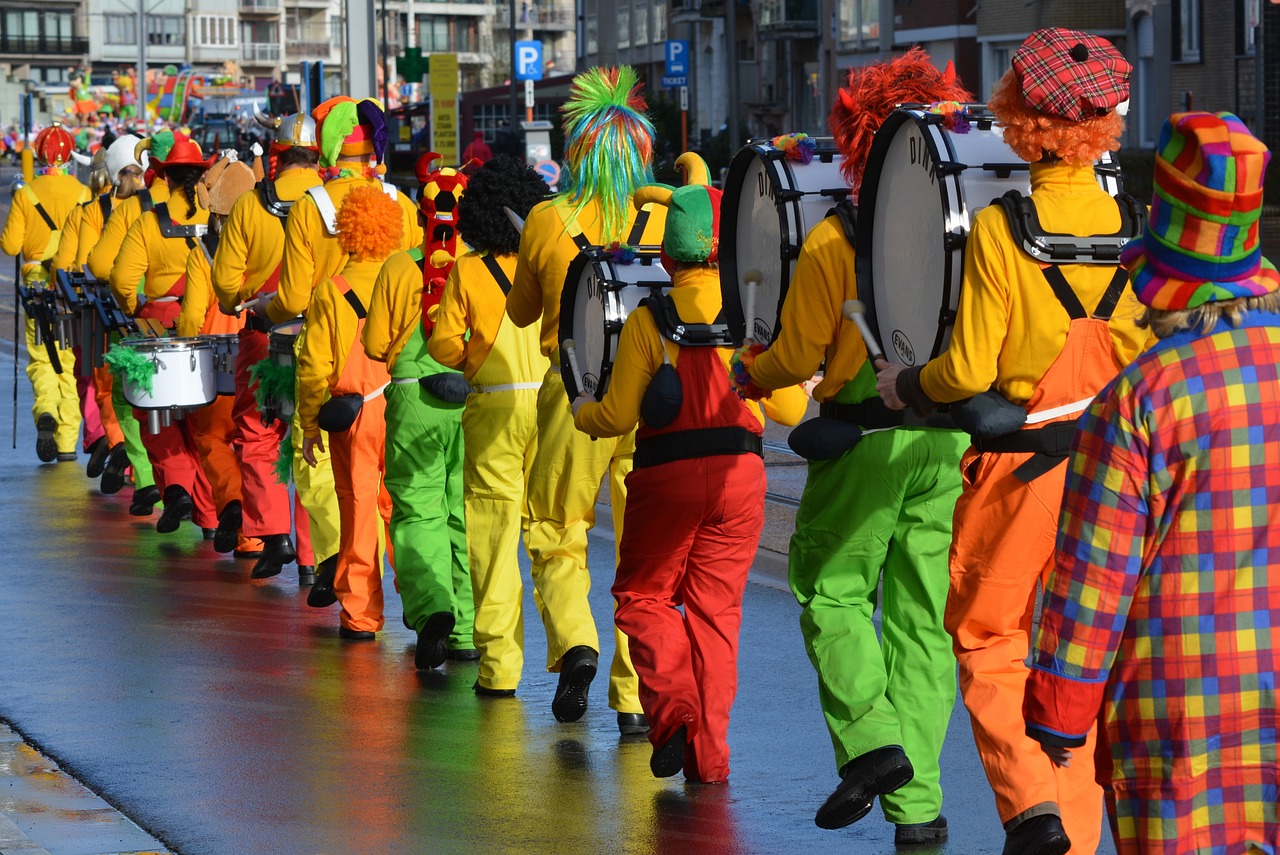
Street Parades and Festivities
Street Parades and Festivities during Trinidad's Carnival are a sight to behold, a mesmerizing display of culture, music, and dance that ignites the streets with energy and passion. As the sun sets, the vibrant procession begins, with revelers adorned in elaborate costumes moving to the infectious rhythms of Calypso and Soca music. Imagine a kaleidoscope of colors swirling through the streets, as dancers showcase their moves with skill and enthusiasm, captivating onlookers with every step.
The pulsating beats of the steelpan bands fill the air, setting the pace for the lively parade. Each band competes not only for recognition but also to capture the hearts of the spectators with their melodic tunes and synchronized performances. It's a symphony of sound and movement, a harmonious blend of tradition and modernity that encapsulates the essence of Trinidad's Carnival.
Amidst the revelry, the aroma of delectable street foods wafts through the air, tempting taste buds and adding to the sensory experience. From savory delights like doubles, aloo pies, and corn soup to sweet treats such as sugarcake and kurma, the culinary offerings of the Carnival are a feast for both the eyes and the palate.
As the parade winds its way through the streets, spectators are swept up in the jubilant atmosphere, joining the dancers in celebration. It's a moment of unity and joy, where people from all walks of life come together to revel in the spirit of Carnival, forgetting their differences and embracing the shared experience of music, dance, and community.
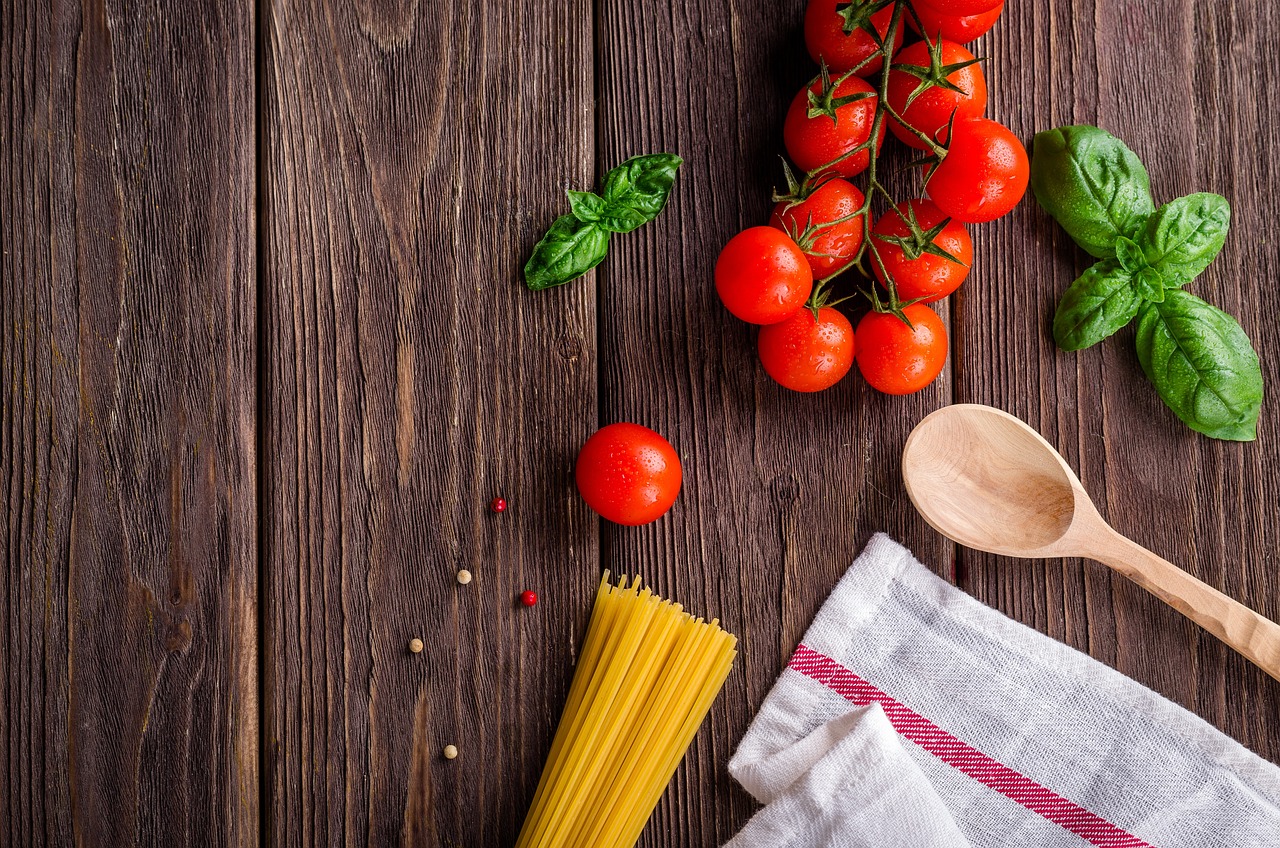
Culinary Delights of Carnival
When it comes to Trinidad's Carnival, the celebration is not just about the vibrant music and colorful costumes but also about the mouthwatering culinary delights that add flavor to the festivities. The streets come alive with the aroma of delicious dishes that cater to every palate, offering a gastronomic experience like no other.
One of the must-try street foods during Trinidad's Carnival is the famous 'doubles,' a savory snack consisting of two baras (fried flatbreads) filled with curried chickpeas, topped with various chutneys and pepper sauce. The explosion of flavors in every bite is sure to leave you craving for more, making it a favorite among both locals and visitors.
Another culinary delight not to be missed is the delectable 'roti,' a traditional Trinidadian dish that consists of a thin, flaky flatbread filled with curried meat or vegetables. The combination of tender meat or flavorful vegetables wrapped in a warm roti is a true taste sensation that embodies the essence of Trinidadian cuisine.
For those with a sweet tooth, Trinidad's Carnival offers an array of delightful treats, including 'guava cheese' and 'coconut ice.' Guava cheese is a sweet confection made from guava fruit and sugar, creating a chewy and fruity delight that is perfect for satisfying sugar cravings. On the other hand, coconut ice is a coconut-flavored candy with a creamy texture that melts in your mouth, providing a refreshing and indulgent treat during the festivities.
As you navigate through the bustling streets of Trinidad's Carnival, be sure to indulge in these culinary delights that not only tantalize your taste buds but also showcase the rich flavors and cultural diversity of the island. From savory street foods to sweet delicacies, the culinary offerings of Trinidad's Carnival are a feast for the senses, adding an extra layer of excitement to this spectacular celebration.

Impact and Global Influence
Trinidad's Carnival holds a significant impact not only locally but also globally, transcending borders and cultures with its vibrant celebration of unity and diversity. The festival's influence extends far beyond the shores of Trinidad, inspiring similar events worldwide and showcasing the power of music, dance, and creativity in bringing people together.
One of the most notable impacts of Trinidad's Carnival is its role in promoting cultural exchange and understanding. As a melting pot of African, French, Spanish, and indigenous influences, the festival serves as a symbol of the island's rich heritage and multicultural identity. Through colorful costumes, pulsating music, and spirited dance performances, Trinidad's Carnival fosters a sense of community and inclusivity that resonates with people from all walks of life.
Furthermore, the global influence of Trinidad's Carnival can be seen in the way it has inspired similar celebrations in various parts of the world. From Notting Hill Carnival in London to the New Orleans Mardi Gras, echoes of Trinidad's vibrant festivities can be found in diverse cultural events that embrace the spirit of joy, creativity, and togetherness.
Moreover, the economic impact of Trinidad's Carnival cannot be understated, as the festival attracts thousands of visitors each year, boosting tourism, local businesses, and the overall economy of the island. From hotels and restaurants to costume designers and musicians, the Carnival season provides a significant economic stimulus that benefits the entire community.
In conclusion, Trinidad's Carnival's impact and global influence go far beyond just a colorful celebration; it represents a cultural phenomenon that celebrates diversity, creativity, and the unifying power of music and dance. As the rhythms of the steelpan reverberate through the streets and the vibrant costumes sway in the breeze, Trinidad's Carnival continues to captivate hearts and minds around the world, leaving a lasting impression of joy, unity, and cultural richness.
Frequently Asked Questions
- What is the history behind Trinidad's Carnival?
Trinidad's Carnival has deep roots in African and French traditions, evolving over the years to become one of the most celebrated festivals in the Caribbean. It is a vibrant display of culture, music, and creativity that brings together people from all walks of life.
- What are some traditional masquerade characters seen in Trinidad's Carnival?
Trinidad's Carnival features iconic characters like the Blue Devil, Moko Jumbie, and Dame Lorraine, each with their own unique costumes and roles in the festivities. These characters add to the rich tapestry of the carnival experience, embodying different aspects of the island's culture and history.
- How is music celebrated in Trinidad's Carnival?
Music is at the heart of Trinidad's Carnival, with Calypso and Soca rhythms filling the streets and setting the tone for the festivities. These genres reflect the island's cultural heritage and provide a lively soundtrack for revelers to dance and celebrate together.
- What can visitors expect to see and do during Trinidad's Carnival?
Visitors to Trinidad's Carnival can expect to witness colorful street parades, elaborate costumes, energetic dance performances, and vibrant musical competitions. It's a time of joy, unity, and cultural celebration that leaves a lasting impression on all who experience it.

